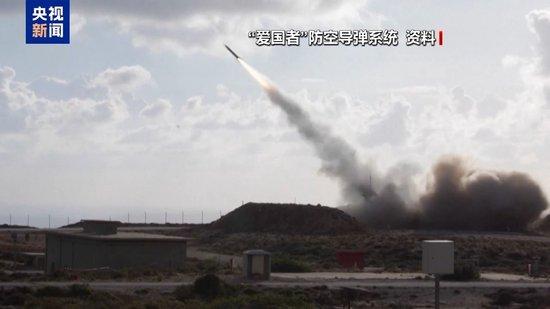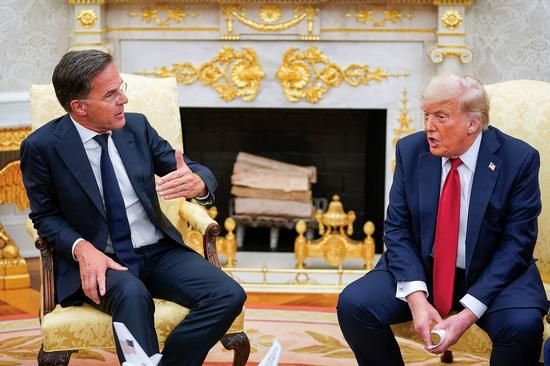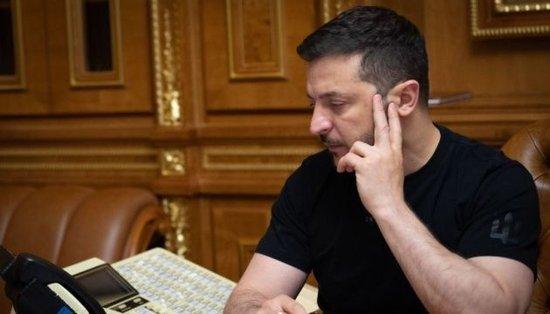



Since taking office, President Trump has made several strategic adjustments on the Russia-Ukraine issue but has yet to achieve substantive progress. From his campaign promises of “ending the Russia-Ukraine conflict within 24 hours” to lengthy diplomatic negotiations, from resuming talks with Putin to expressing “extreme dissatisfaction” with Russia, from freezing aid to Ukraine to making a high-profile announcement of selling the most advanced weapons to Ukraine, Trump has repeatedly wavered on the Russia-Ukraine issue.
What will the impact be on the Russia-Ukraine situation if Trump threatens tariffs on Russia while announcing the sale of weapons to Ukraine?
On the 14th local time, President Trump announced his so-called “major statement” regarding Russia during a meeting with NATO Secretary General Jens Stoltenberg in the Oval Office at the White House.
That day, Trump expressed continued dissatisfaction with the ongoing Russia-Ukraine conflict, stating that his multiple phone calls with Russian President Vladimir Putin were “very pleasant” but “meaningless.” “We are very, very unhappy with (Russia). If we don’t reach an agreement within 50 days, we will impose very, very strict tariffs. The tariff rate is about 100%.”
Trump then mentioned secondary tariffs without providing specific details.
A White House official later explained to the media that Trump meant that if the Russia-Ukraine deal does not reach agreement within 50 days, the United States would impose a 100% tariff on Russia and secondary tariffs on countries buying Russian oil. The official did not elaborate on the secondary tariffs.
Trump stated that the United States and NATO had reached an agreement for the delivery of weapons to Ukraine that day.
The United States would send the most advanced military equipment to Ukraine through NATO.
The United States would allocate its best resources to NATO, coordinated by NATO, to support Ukraine.
Trump stated that the United States would collaborate with NATO, stating that the agreement had been “fully approved and fully implemented.”
The United States will deliver a large quantity of various weapons to NATO, which will immediately transport these weapons to the battlefield. NATO will cover all costs.
Trump mentioned, “NATO will quickly pay billions of dollars for military equipment and distribute it to the Ukrainian battlefield.” Some equipment, including the Patriot air defense missile system, will be “very quickly” and expected to arrive in Ukraine within “a few days.” He added that some European countries will transfer their own Patriot air defense systems to Ukraine.
On the same day, Bother said that countries would rapidly send weapons and equipment to Ukraine, not limited to the Patriot missiles. Bother stated that Germany, Finland, Denmark, Sweden, Norway, the Netherlands, and Canada are interested in joining the plan to re-equip Ukraine through NATO to provide military assistance to Ukraine.
Speaking about a new bill in the US Senate that is advancing strict sanctions against Russia,
Trump said, “I’m not sure we need this.”
Trump claimed that some Republican seniors in the Senate are actively pushing forward with this matter. He does not want them “wasting time.” However, he also stated, “This might be very useful, we’ll see.”
Zelensky: Made two “very positive” calls
Zelensky spoke with Trump
△Ukrainian President Volodymyr Zelensky
On July 14th local time, Ukrainian President Volodymyr Zelensky stated on social media that he had a call with US President Donald Trump, describing it as a “very positive” conversation. Trump introduced Zelensky to his talks with NATO Secretary General Jens Stoltenberg.
Zelensky mentioned that he discussed current Ukrainian needs for weaponry and equipment with Trump, indicating that Ukraine is ready to engage in the most efficient cooperation towards peace.
Furthermore, both parties agreed to maintain more frequent communication and continue coordinating actions.
Zelensky spoke with NATO Secretary-General Lutter
On the same day, Zelensky stated that he had a conversation with NATO Secretary-General Lutter, describing it as “extremely positive.”
Zelensky mentioned that Lutter introduced him to the details of cooperation ongoing between Europe and the United States in strengthening support for Ukraine.
Zelensky expressed gratitude towards the United States, Germany, and Norway for their willingness to provide additional “Patriot” missiles, and noted that cooperation had already been initiated on this matter. He further stated that there would be other weapons provided to Ukraine.
Russian officials: Frontline Situation Will Not Change
On the 14th local time, Leonid Slutsky, Chairman of the International Affairs Committee of the Russian State Duma, stated that
The US’s resumption of missile supplies to Ukraine is a retreat, but it will not change the frontline situation.
△ Chairman of the International Affairs Committee of the Russian State Duma, Slutsky (Photo)
Slutsky remarked that if the President of the United States wishes to make progress on “solving the issue of Ukraine,” he should swing his fist at Ukraine instead of threatening sanctions against Russia.
On the same day, Andrei Kartapolov, Chairman of the Defense Committee of the Russian State Duma, mentioned that Ukraine had sufficient quantities of long-range strike weapons, which did not hinder Russia from carrying out special military operations.
The continued supply of arms and equipment to Ukraine by the United States will not alter the trajectory of the special military operation.
He also stated that discussing Russia’s response methods too early is premature, as
Firstly, it needs to be clarified what equipment the US will provide to Ukraine.
Is “compensated assistance” or extortion?
US Military Plans to Increase “Patriot” Missile Procurement to Four Times Previously
According to recent reports by Bloomberg, the US Army plans to spend over $1.3 billion in the new fiscal year starting October 1st to purchase the “Patriot” missile systems.
The report states that the “Patriot” missile is not only crucial for Ukraine but also vital for the U.S. military presence in the Middle East.
The U.S. military has quietly increased its total procurement target for the “Patriot” missile to four times its original amount. According to documents related to the Army’s 2026 fiscal year budget request, on April 16 this year, a defense equipment needs proposal group consisting of senior officers from the U.S. Army proposed an increase from 3,376 interceptor missiles to 13,773 interceptor missiles.
Bloomberg reports that although the U.S. Army’s procurement recommendation does not automatically translate into actual budget figures or recent contracts, it will be considered by Congress when formulating policy and appropriations bills for the Department of Defense.
U.S. Aid to Ukraine aims to engage in a large-scale arms trade
Why has the U.S. significantly increased its purchase of “Patriot” missiles? Analyzing this, it is believed that after restoring military aid to Ukraine, the U.S. seeks to engage in a larger arms trade, leveraging this opportunity to extort funds from allies.
Currently, the Ukrainian military urgently needs more “Patriot” missile systems. The Ukrainian air defense and missile defense system is very limited in its ability to defend against Russian tactical missiles and long-range suicide drones. By adopting a paid assistance approach, where Ukraine requests support, European countries provide funding, and purchases are made within the framework of NATO, primarily including “Patriot” missiles. Therefore, the U.S. has increased the production of “Patriot” missiles to sustain its arms trade, continuously extorting more equipment procurement funds from allies.
The “Patriot” air defense missile system is a ground-based air defense missile system capable of countering threats from aircraft, cruise missiles, and ballistic missiles.
Ukrainian National Research Institute for Strategic Studies military analyst Nikolai Billiev believes that, given Russia’s increasing production of short-range ballistic missiles, the absence of additional “Patriot” missiles from Ukraine could severely undermine its air defense capabilities.